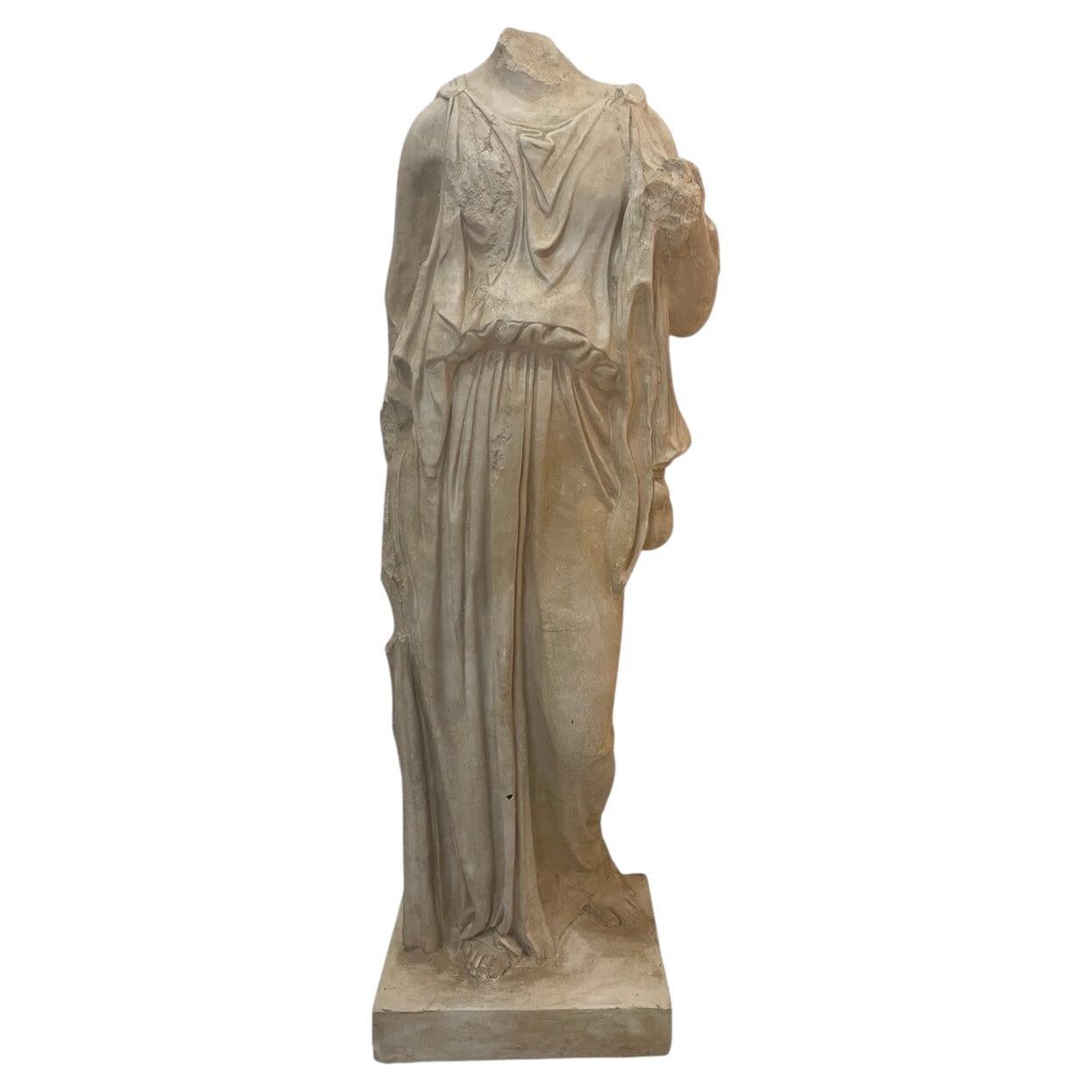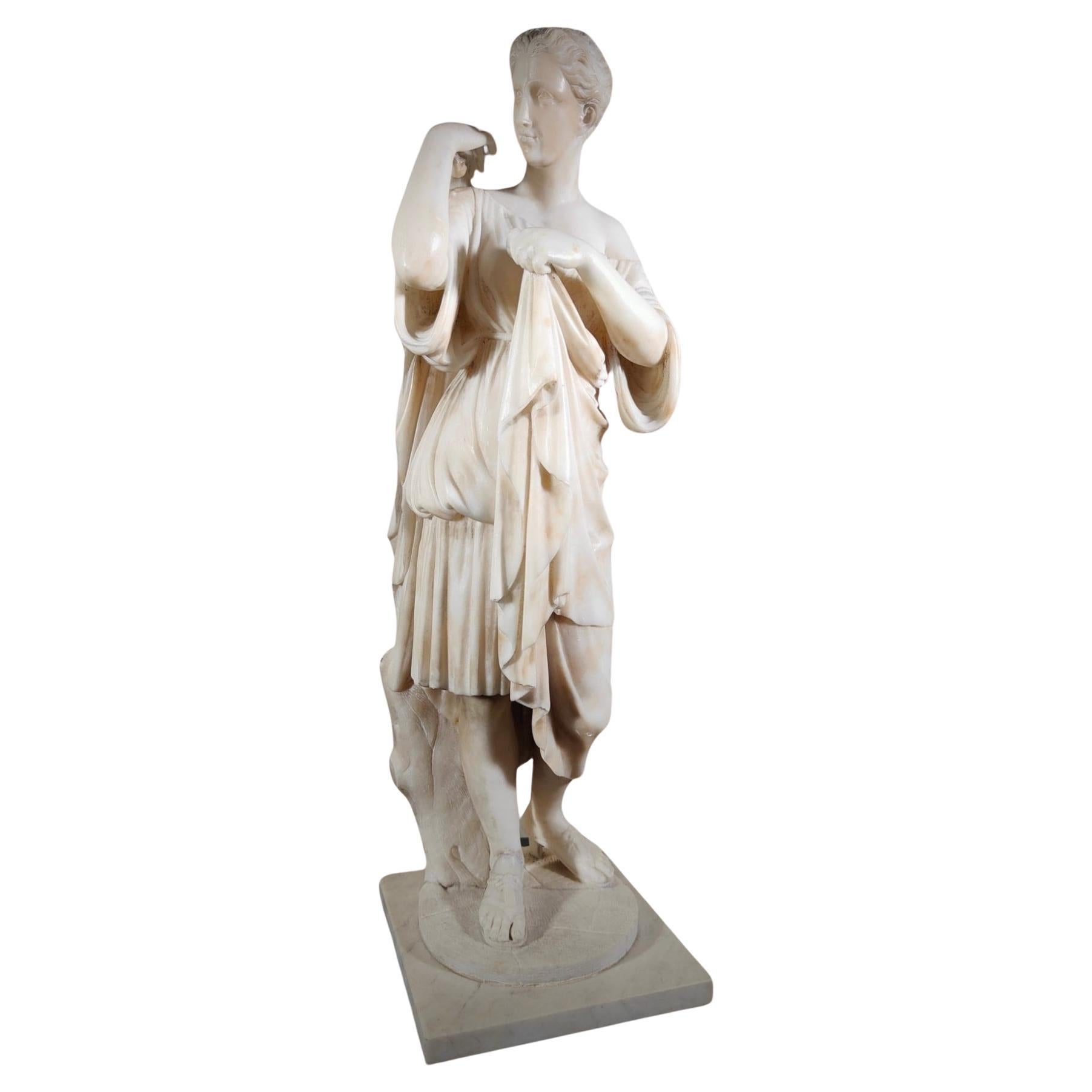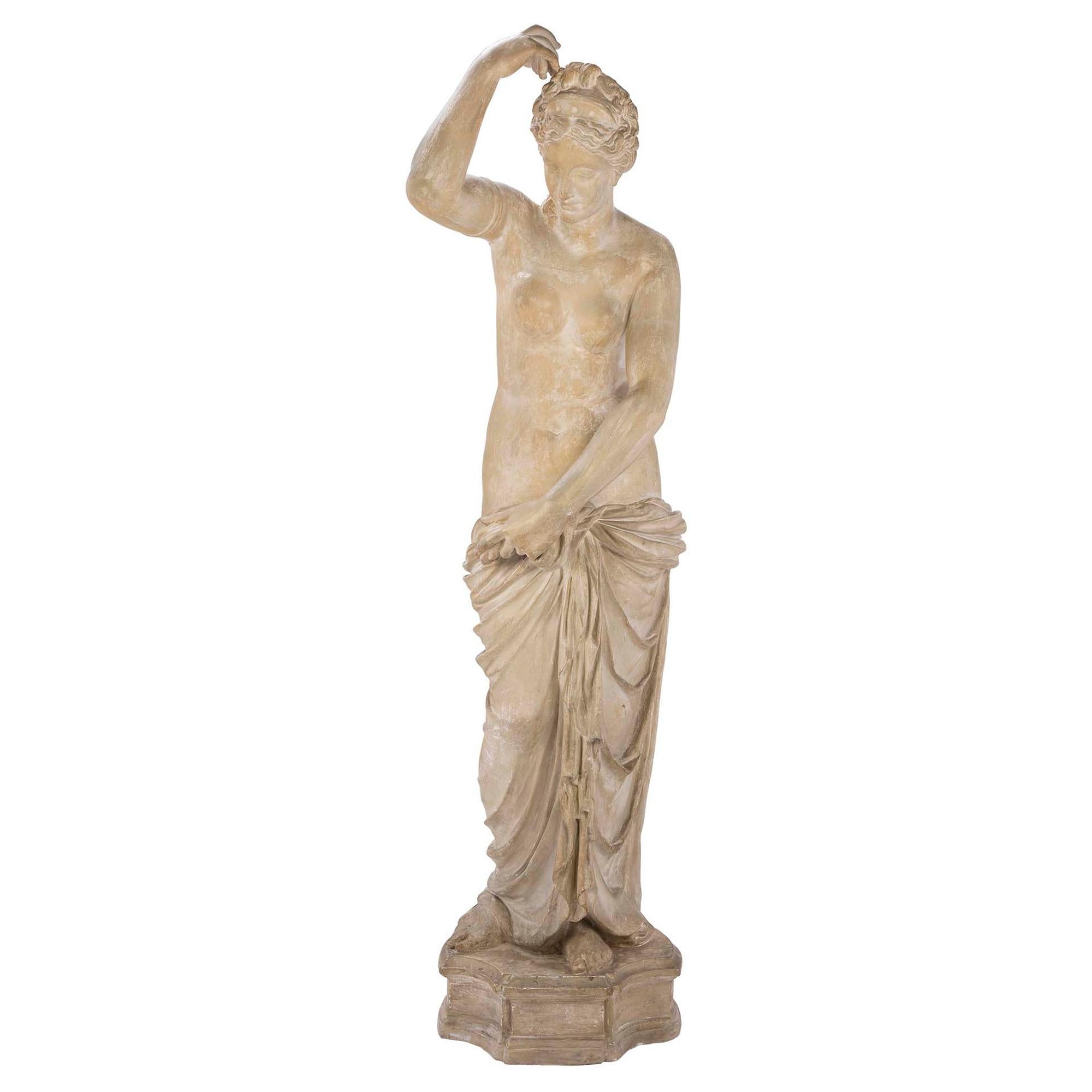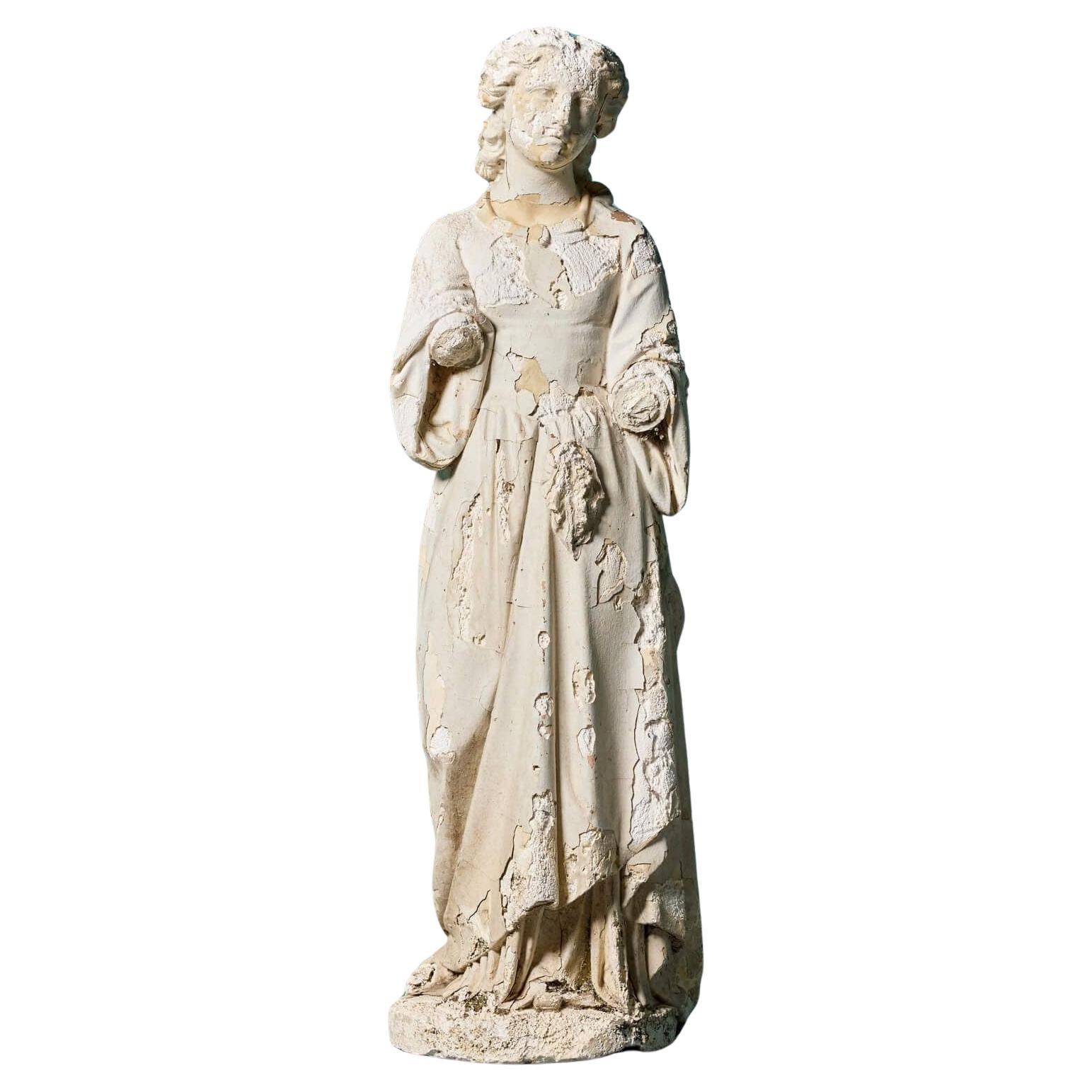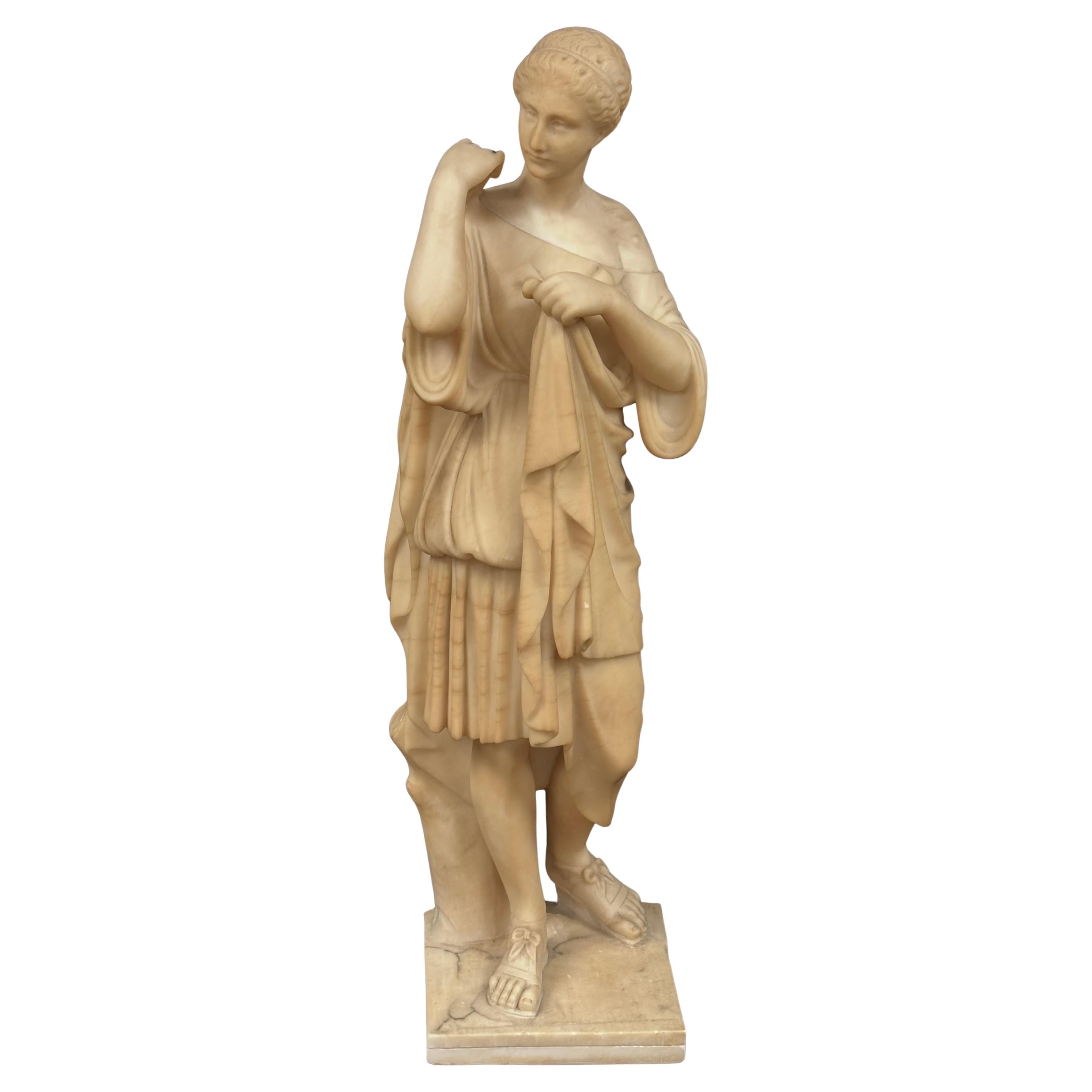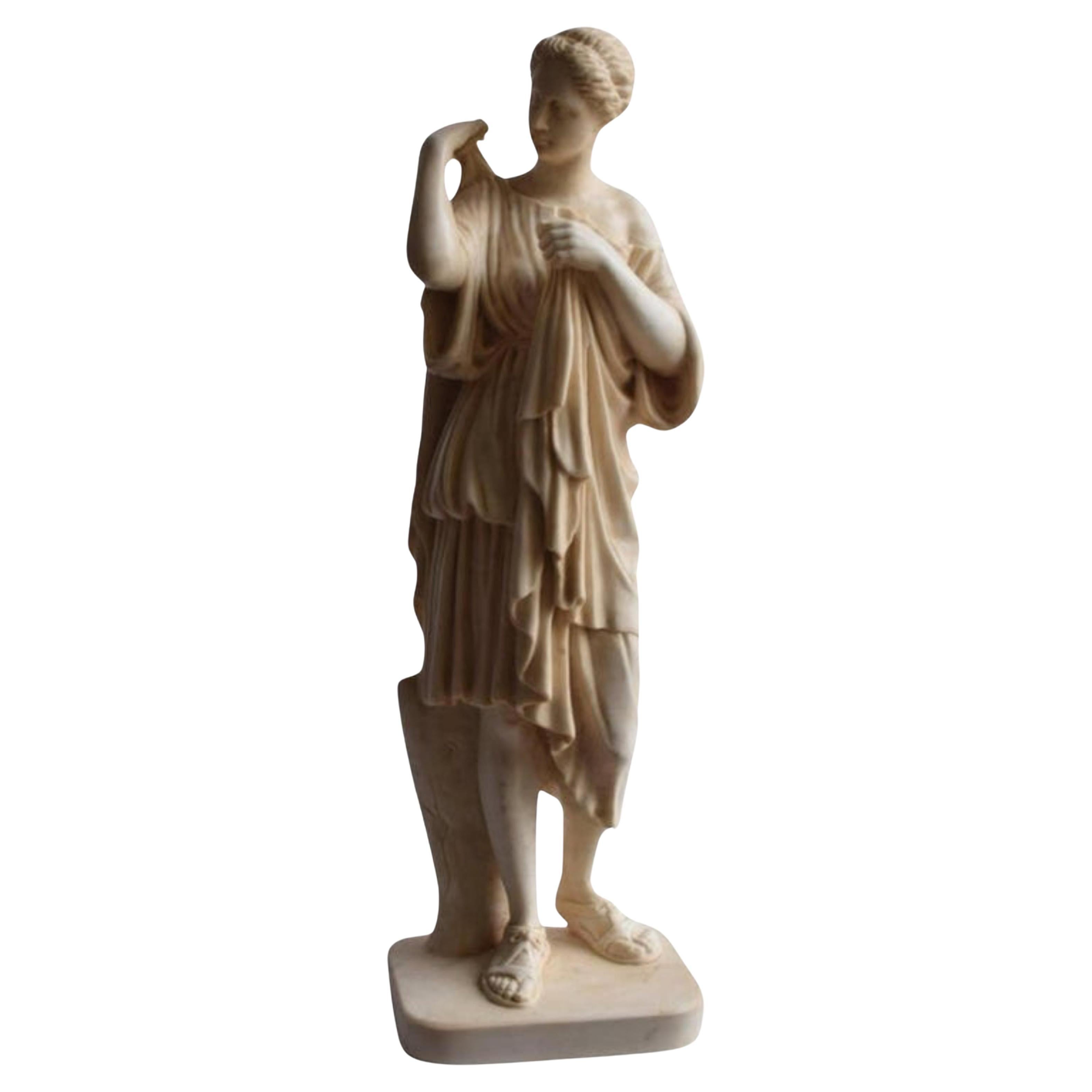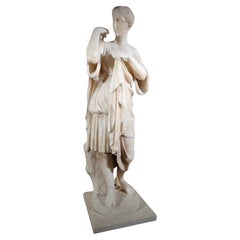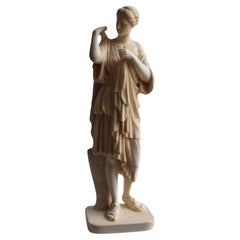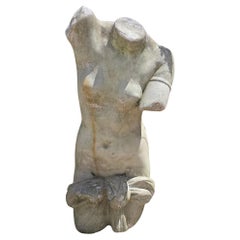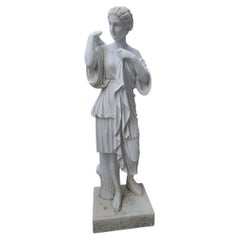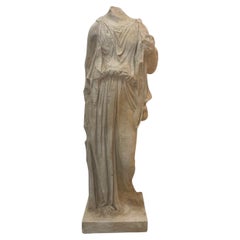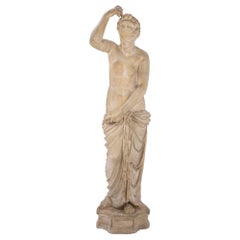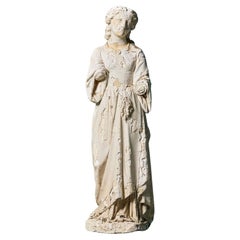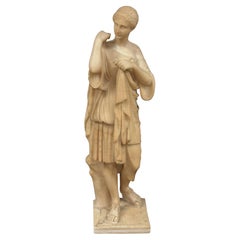Items Similar to IMPORTANT ANTIQUE 19th Century PLASTER OF THE DIANA OF GABI FROM THE LOUVRE
Want more images or videos?
Request additional images or videos from the seller
1 of 10
IMPORTANT ANTIQUE 19th Century PLASTER OF THE DIANA OF GABI FROM THE LOUVRE
$23,619.64
$29,524.5520% Off
£17,462.31
£21,827.8920% Off
€19,800
€24,75020% Off
CA$32,488.47
CA$40,610.5820% Off
A$36,112.95
A$45,141.1820% Off
CHF 18,929.63
CHF 23,662.0420% Off
MX$441,026.46
MX$551,283.0720% Off
NOK 236,325.54
NOK 295,406.9320% Off
SEK 222,338.25
SEK 277,922.8120% Off
DKK 150,737.07
DKK 188,421.3420% Off
About the Item
ANTIQUE 19TH CENTURY PLASTER OF THE DIANA OF GABI FROM THE LOUVRE
Ancient plaster with identical measurements to the original Greek marble exhibited at the Louvre. Diana of Gabi, discovered in 1792 by Gavin Hamilton in Rome. The plaster is an original ancient and shows all its years, we will supply it partially restored with the iron base included. The object was acquired from a famous sculpture workshop that had owned it since 1959 but which in turn the owner had acquired it from another craftsman from Carrara who had owned it since the mid-1800s. The object is fascinating, beautiful. Original iron base included.
The Diana of Gabi is a statue depicting a woman wrapped in a drape; most likely it represents the goddess Artemis, and is traditionally attributed to Praxiteles. In the past it was part of the Borghese collection and is preserved at the Louvre Museum.
The statue was discovered in 1792 by Gavin Hamilton, in the properties of Prince Marcantonio IV Borghese near Rome, where the city of Gabi once stood, and was immediately included in the prince's collection. In 1807, due to financial difficulties, Prince Camillo II Borghese, son of Marcantonio, was forced by Napoleon to sell 344 works from the Borghese collection to France. Since 1820, the Diana of Gabi has been on display at the Louvre.
The statue became very popular in the 19th century: a plaster cast was placed at the Athenaeum Club in London; a marble copy was present among the reproductions of ancient statues intended to decorate the Cour Carrée, the Square Court of the Louvre, and a copy decorated a fountain in the French town of Grancey-le-Château-Neuvelle, in the Côte-d'Or. In addition, smaller-scale reproductions were made and then sold to art enthusiasts.
The young woman is depicted larger than life-size. The weight of the body is discharged on the right leg, reinforced with a tree stump; the left leg, however, does not contribute in any way to supporting the figure: the left foot, in fact, has a raised heel and toes turned outwards.
The statue is generally identified as Artemis, goddess of virginity, hunting and the woods, exclusively because of her clothes. In fact, she wears a chiton that is not particularly long with wide sleeves, typical of the goddess. The chiton is tied with two straps, one visible around her waist, the other hidden, which hold part of the fabric, shortening the chiton and showing her knees. The goddess is depicted in the act of fastening her cloak with a pin: her right hand holds a fibula and holds up a fold of the dress on her right shoulder, while the left hand holds another fold of the dress at chest height. The movement causes the collar of the chiton to fall, leaving the left shoulder uncovered.
Her head is slightly turned to the right, but the goddess does not seem to be paying attention to what she is doing. Instead, her gaze is directed to her surroundings, a typical feature of classical statues. Her flowing hair is pulled back by a band tied above the neck, then gathered into a bun held in place by a second, invisible ribbon.
According to Pausanias, Praxiteles created the statue of Artemis Brauronia for the Acropolis of Athens. The inventories of the temple, dated 347-346 BC, mention a "dedicated statue", describing it as depicting the goddess in a chitoniskos. It is also known that the cult of Artemis Brauronia also included the consecration of garments offered by maidens.
Praxiteles' statue has long been associated with the Diana of Gabii: the goddess appears wearing the gift of her devotees. In addition, the head strongly resembles those of the Cnidian Aphrodite and the Apollo sauroctonos, both attributed to Praxiteles. On the other hand, the identification of the statue has been questioned for several reasons. First, regarding the inventories discovered in Athens, it has been shown that they are copies of those concerning the main sanctuary at Brauron and it is therefore not certain that the cult in Athens also included the consecration of the garments. Furthermore, the short chiton is anachronistic for the 4th century BC, thus suggesting a Hellenistic placement. Finally, a recent hypothesis relates the statue of Artemis Brauronia to a head present in the Museum of the Ancient Agora of Athens, known as the Despinis Head.
The Diana of Gabii is nevertheless considered a work of impressive quality and conforms to what is commonly considered the Praxitelean style, leading some scholars to continue to consider the statue a work by Praxiteles or one of his sons.
Height
110 cm
Width
56 cm
Depth
40 cm
Weight
45 Kg
Artist / Designer / Architect
Praxiteles
Historical period
347-346 BC
Material
ancient plaster
Museum: Louvre
- Dimensions:Height: 43.31 in (110 cm)Width: 22.05 in (56 cm)Depth: 15.75 in (40 cm)
- Style:Baroque (Of the Period)
- Materials and Techniques:
- Place of Origin:
- Period:
- Date of Manufacture:19th Century
- Condition:Repaired: little repairs. Wear consistent with age and use. good condition for the age.
- Seller Location:Madrid, ES
- Reference Number:1stDibs: LU5779242157002
About the Seller
4.8
Platinum Seller
Premium sellers with a 4.7+ rating and 24-hour response times
Established in 2005
1stDibs seller since 2021
371 sales on 1stDibs
Typical response time: 1 hour
- ShippingRetrieving quote...Shipping from: Madrid, Spain
- Return Policy
Authenticity Guarantee
In the unlikely event there’s an issue with an item’s authenticity, contact us within 1 year for a full refund. DetailsMoney-Back Guarantee
If your item is not as described, is damaged in transit, or does not arrive, contact us within 7 days for a full refund. Details24-Hour Cancellation
You have a 24-hour grace period in which to reconsider your purchase, with no questions asked.Vetted Professional Sellers
Our world-class sellers must adhere to strict standards for service and quality, maintaining the integrity of our listings.Price-Match Guarantee
If you find that a seller listed the same item for a lower price elsewhere, we’ll match it.Trusted Global Delivery
Our best-in-class carrier network provides specialized shipping options worldwide, including custom delivery.More From This Seller
View AllDiana de Gabios marble sculpture 19th century
Located in Madrid, ES
It is the sculpture of a woman covered with a draped chiton, probably representing the goddess Artemis and traditionally attributed to the sculptor Praxiteles. Found in the ancient t...
Category
Antique Late 19th Century Figurative Sculptures
Materials
Marble
$2,710 Sale Price
20% Off
Important Italian Sculpture "Diana Gabi" Carrara Marble 19th-20th Century
Located in Madrid, ES
Important Italian sculpture "Diana Gabi"
Carrara marble
19th-20th century
Very good condition.
Category
Antique Late 19th Century Italian Baroque Busts
Materials
Marble
$8,111 Sale Price
20% Off
Large Classical Greek-Style Plaster Bust, 1950s
Located in Madrid, ES
Impressive plaster bust in the style of Classical Greece, crafted in the 1950s. This sculptural piece features refined facial features, flowing hair, and idealized proportions remini...
Category
Vintage 1940s Figurative Sculptures
Materials
Plaster
$2,338 Sale Price
20% Off
Classical Carrara Marble Sculpture of Diana, Italy, 20th Century
Located in Madrid, ES
Refined hand-carved marble sculpture representing Diana, the ancient Greco-Roman goddess of the hunt and the moon. Made in Italy during the 20th century from fine white Carrara marbl...
Category
Vintage 1960s Figurative Sculptures
Materials
Marble
$2,824 Sale Price
20% Off
Large Italian Marble Sculpture of a Roman Woman, Early 20th Century
Located in Madrid, ES
Large Italian Marble Sculpture of a Roman Woman, Early 20th Century
Description:
Elegant marble sculpture of a classical Roman woman, c...
Category
Vintage 1920s Statues
Materials
Marble
$23,772 Sale Price
20% Off
LARGE 19TH-CENTURY MARBLE STATUE - 120 cm
Located in Madrid, ES
A large 19th-century white Carrara marble statue with a 20th-century head. This highly decorative piece combines classical marble craftsmanship with a later addition, making it a uni...
Category
Antique 1890s Mounted Objects
Materials
Carrara Marble
$12,644 Sale Price
20% Off
You May Also Like
Large Plaster Sculpture of Greek Goddess
Located in Houston, TX
Large Plaster Sculpture of Greek Goddess, headless and armless. Nicely aged patina.
Category
Mid-20th Century French Classical Greek Figurative Sculptures
Materials
Plaster
French 19th Century Plaster Neoclassical Style Statue of a Maiden
Located in West Palm Beach, FL
A lovely French 19th century plaster neoclassical st. statue of a maiden. The statue is raised on a mottled platform with concave front sides. The maiden is draped at her hips in a classical fashion. One hand holds her garment up, and the other is raised above her head. Her hair is gathered up and she wears an upper arm bracelet...
Category
Antique 19th Century French Neoclassical Figurative Sculptures
Materials
Marble
Antique Classical Maiden Plaster Statue
Located in Wormelow, Herefordshire
An antique classical maiden plaster statue dating from the early 20th century suitable for interior use. This piece is a wonderfully distressed statu...
Category
Early 20th Century English Regency Statues
Materials
Plaster
European Classical Alabaster Figure of Diana
Located in Bradenton, FL
19th Century European Classical Alabaster Figure of Diana, a reinterpretation of the ancient Roman statue. This statue known for its graceful portraya...
Category
Antique Late 19th Century Italian Grand Tour Figurative Sculptures
Materials
Marble
American 19th Century Plaster Statue of a Classical Maiden
By Caproni Brothers
Located in West Palm Beach, FL
A most elegant American 19th century plaster statue of a classical maiden signed PP Caproni & Bro. Boston. The beautiful maiden is raised by a square base and is draped in wonderfull...
Category
Antique 19th Century North American Figurative Sculptures
Materials
Plaster
1990s Hand Carved White Marble Classical Greek Kore Female Sculpture
Located in Marbella, ES
1990s hand carved aged Macael white marble reproduction of Classical Greek Kore female sculpture. Its posture is rigid and column-like, showing the restrained "archaic smile" which d...
Category
Late 20th Century Asian Statues
Materials
Marble
More Ways To Browse
Important Antiques
Hand Cast Plaster
Tree Of Life Fabric
Used Furniture Athens Greece
Antique Furniture Hamilton Furniture
Fountain Woman
French Baroque Fabric
Antique Tie Pin
Baroque Plaster
Cast Iron Chest
1800s Cast Iron
Iron Collar
Bc Workshop
Aphrodite Marble
Plaster Drape
Antique Marble Fountain
Cast Iron Fountains
Plaster Foot Sculpture
